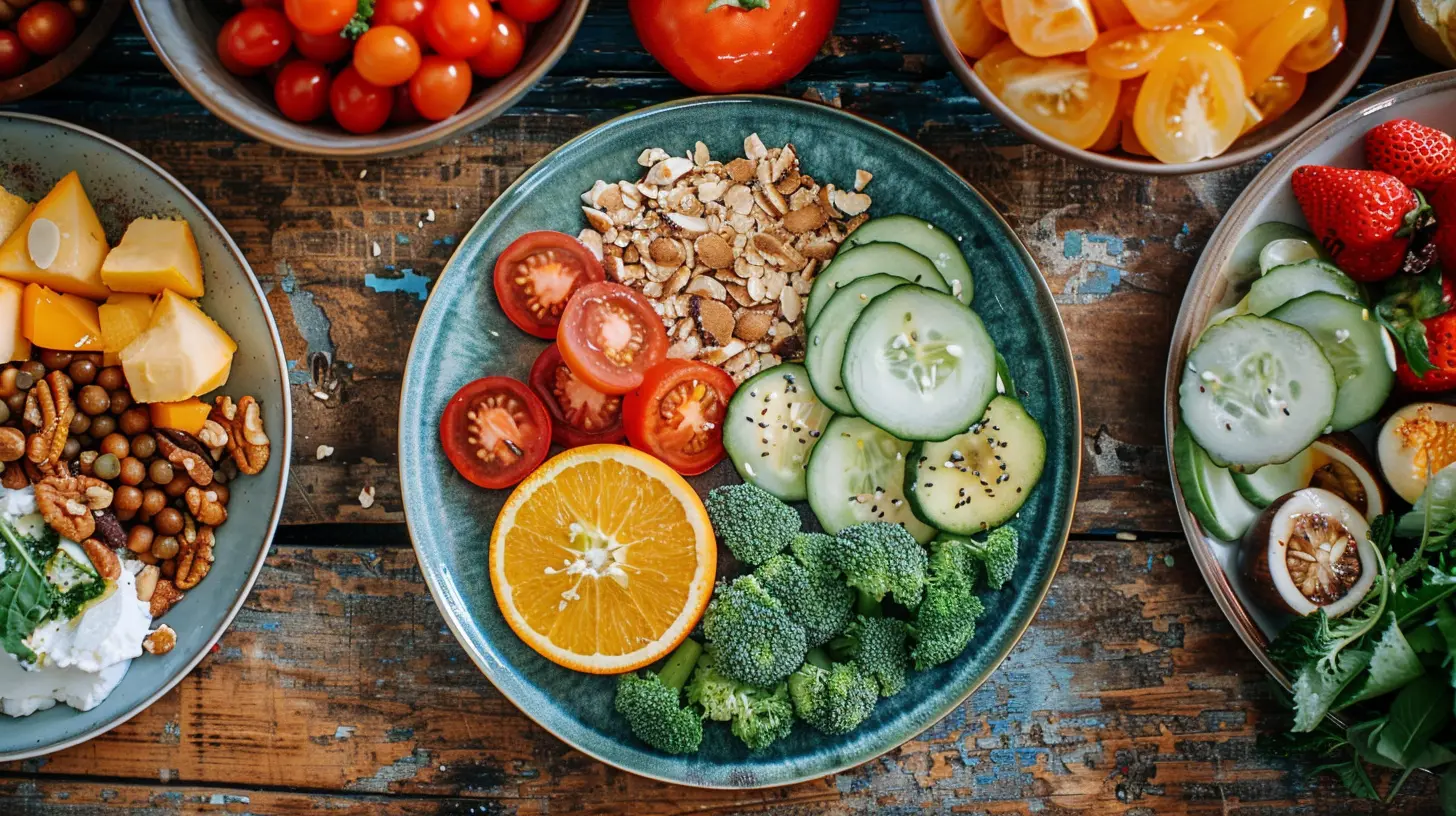Tips for Introducing New Foods to Toddlers
24 July 2025
Feeding toddlers can often feel like trying to nail jelly to a wall — messy, frustrating, and seemingly impossible. One day they love bananas, the next day they're acting like you just offered them a plate of worms. If that sounds familiar, you’re not alone!
Introducing new foods to toddlers is one of the most common challenges parents face. The good news? With a few insider tips and a boatload of patience, you can help your little one embrace a more adventurous and nutritious palate. Let’s dig into some practical, real-world strategies that’ll make mealtimes a little less dramatic and a lot more successful.
Why Is Introducing New Foods So Hard With Toddlers?
Let’s start with the million-dollar question. Why do toddlers seem hardwired to reject anything that doesn’t resemble a chicken nugget?Well, toddlers are in a developmental stage known as neophobia — the fear of new things. That includes strange textures, unfamiliar colors, and yes, even those lovingly prepared veggie purees. Combine that with their drive for independence, and suddenly, refusing dinner becomes their new favorite power move.
But don't sweat it! Their resistance is totally normal. It's not about your cooking skills — it's just part of being a toddler.
1. Start Slow and Stay Chill
When you’re introducing a new food, think of it like meeting someone new. You wouldn’t ask a stranger to be your best friend on day one, right?Instead of serving an entire plate of something unfamiliar, offer a small taste alongside foods they already love. For example, if your toddler adores mashed potatoes, try sneaking in a pinch of mashed cauliflower. No pressure, no big announcements — just a casual “Hey, this is here if you're interested.”
Keeping your cool is key. The more relaxed you are, the less pressure your toddler feels. Trust me, they can smell stress from a mile away.
2. Make It A Family Affair
Toddlers are little copycats. If they see you munching on broccoli with a smile (even if it's slightly forced), they’re more likely to join in.Serve the same foods to everyone at the table, whenever possible. When your toddler sees the rest of the family enjoying the meal, it makes the food seem less “weird.” This is also a great opportunity to model good table manners and eating habits.
Bonus tip: Say things like, “Mmm, these carrots are so crunchy!” instead of “You need to eat your carrots.” Positive vibes only, folks.
3. Get Them Involved in the Kitchen
Want your toddler to get excited about food? Let them be part of the process!Toddlers love feeling helpful. Even simple tasks like washing veggies, stirring batter, or choosing between green beans and peas can make them more interested in trying what they helped make.
This builds a sense of ownership — and let’s be honest, food just tastes better when you've made it yourself (even if it’s full of finger pokes and way too much salt).
4. Keep Offering... and Then Offer Again
Here’s where most parents get tripped up. You introduce something new, your toddler says “yuck,” and it never sees the light of day again. Sound familiar?But here's the thing: it can take 10–15 (or more!) tries before a toddler accepts a new food. So don’t give up after the first (or fifth) attempt.
Keep presenting that new food in different ways — roasted, steamed, raw, mixed into a favorite dish, or paired with a dip. Over time, curiosity might just win out.
5. Play With Presentation
Let’s face it — toddlers are visual creatures. If it looks fun, they’re more likely to give it a go.Cut fruits and veggies into fun shapes using cookie cutters. Arrange foods into smiley faces or simple animal shapes. Use colorful plates and utensils. A little creativity can go a long way in getting them to take that first bite.
And don’t forget dips! Toddlers LOVE to dip. Hummus, yogurt, guacamole, or even a little ranch dressing can make that carrot suddenly irresistible.
6. Respect Their Appetite (Or Lack Of One)
There will be days when your toddler eats like a champ, and others when they survive on three grapes and a cracker. That’s okay.Avoid forcing, bribing, or begging them to eat. This can create negative associations with mealtime that might make things worse down the line.
Instead, offer a variety of foods and let them decide how much they want to eat. Trust their instincts — they're surprisingly good at knowing when they're hungry (even if it's not on your schedule).
7. Use Mealtime Routines
Toddlers thrive on routine. Establish regular meal and snack times so they know what to expect. This helps regulate their appetite and cuts down on grazing all day, which can kill their hunger come dinnertime.Keep meals relatively short (20–30 minutes), and minimize distractions like TV or toys. The dinner table should be a calm, happy place — not a battleground.
8. Mix the New With the Familiar
When serving a new food, pair it with one or two familiar favorites. This improves the chances it'll at least be tasted.For example, if you’re introducing quinoa, serve it alongside baked sweet potato (a known fave) and some grilled chicken. Sandwiching new flavors between trusted ones makes them feel less intimidating.
Think of it like blending a fresh face into a group of old friends. Much easier to warm up to.
9. Avoid the “One Bite” Rule (Or At Least Reframe It)
You’ve probably heard of the “just take one bite” rule. While the idea is well-meaning, it can feel like pressure to a toddler, which can backfire.Instead, use curiosity-driven phrases like, “Let’s see if this crunchy carrot makes a cool sound!” or “Do these peas roll off your spoon or stay put?” Make it about exploration, not obligation.
Turning food into a mini science experiment or sensory activity can ease some of that resistance.
10. Don’t Label Foods as “Good” or “Bad”
Kids are little sponges. If they hear that broccoli is “healthy” and cookies are “bad,” they might start viewing eating as a moral issue.Instead of focusing on which foods are “good,” emphasize how foods help our bodies. Say things like, “Carrots help us see better,” or “Chicken gives us energy to run and play.”
This helps them form a positive relationship with food from the get-go — and that matters a lot more than getting them to eat one more bite today.
11. Celebrate Small Wins
Got them to touch the spinach? That’s a win. Licked the hummus? Another gold star. Took a bite and spit it out? Totally counts.Make a big deal out of the progress — no matter how small. Positive reinforcement goes a long way and builds confidence in their eating skills.
12. Be Patient — Like, REALLY Patient
This part might be the toughest of all. Your toddler isn’t going to become an adventurous eater overnight. It’s a slow journey, full of ups, downs, and unexpected detours.And that’s okay.
What matters most is consistency, patience, and keeping the experience positive. You’re planting seeds now that’ll grow over time. Today it's broccoli, tomorrow it might be Brussels sprouts. Stranger things have happened!
Final Thoughts
Introducing new foods to toddlers is equal parts art, science, and magic trick. There’s no one-size-fits-all strategy — but with some creativity, patience, and a laid-back attitude, you can absolutely help your toddler open up to more flavors and textures.Remember, it’s not about perfection. It’s about shaping a healthy, curious mindset around food. So keep offering, keep modeling, and keep celebrating those small victories.
Your tiny picky eater might just surprise you one day. And when that happens? Totally worth every broccoli battle you fought.
all images in this post were generated using AI tools
Category:
Healthy MealsAuthor:

Kelly Snow
Discussion
rate this article
1 comments
Parisa Graham
Great tips! Encouraging exploration makes mealtime fun and enjoyable for little ones!
August 2, 2025 at 2:27 AM

Kelly Snow
Thank you! I'm glad you found the tips helpful. Encouraging exploration truly makes mealtime an adventure for toddlers!


